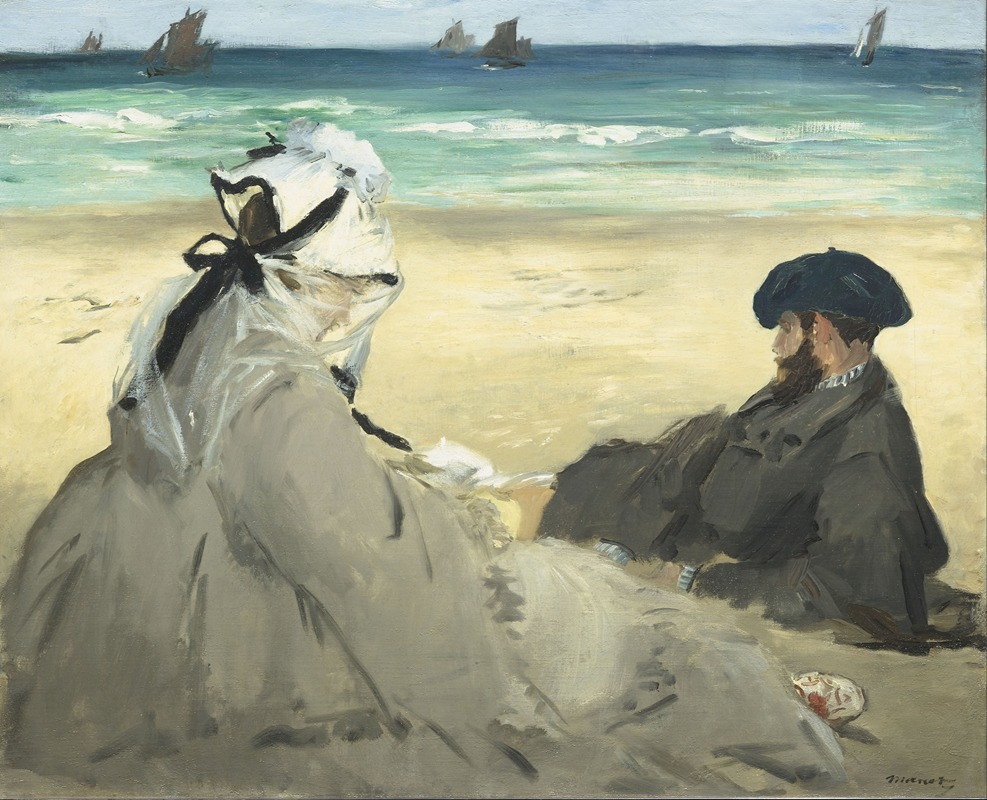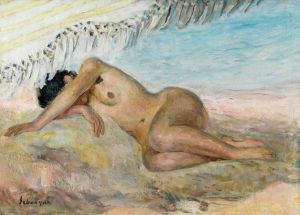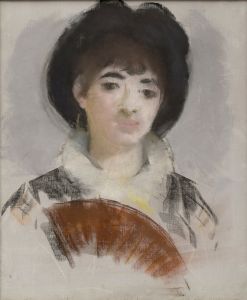
On The Beach
A hand-painted replica of Édouard Manet’s masterpiece On The Beach, meticulously crafted by professional artists to capture the true essence of the original. Each piece is created with museum-quality canvas and rare mineral pigments, carefully painted by experienced artists with delicate brushstrokes and rich, layered colors to perfectly recreate the texture of the original artwork. Unlike machine-printed reproductions, this hand-painted version brings the painting to life, infused with the artist’s emotions and skill in every stroke. Whether for personal collection or home decoration, it instantly elevates the artistic atmosphere of any space.
Édouard Manet's painting "On the Beach" is a notable work by the French modernist painter, created in 1873. This painting is a fine example of Manet's innovative approach to capturing contemporary life and his transition towards a more impressionistic style, which was emerging during this period. Manet, who is often regarded as a pivotal figure in the transition from Realism to Impressionism, frequently explored themes of leisure and modernity in his works.
"On the Beach" depicts a serene seaside scene, capturing a moment of leisure on the beach at Berck, a small fishing village on the northern coast of France. This location was a popular destination for Parisians seeking a coastal retreat during the 19th century. The painting features two figures, a man and a woman, who are believed to be Manet's friends or acquaintances. They are seated on the sandy shore, with the woman reclining and the man sitting upright, both gazing out towards the sea. The figures are dressed in contemporary clothing, which was typical of Manet's approach to portraying modern life.
The composition of "On the Beach" is characterized by its simplicity and the use of light and color to convey the atmosphere of a sunny day by the sea. Manet employs a loose brushwork technique, which was becoming more prevalent among artists of the Impressionist movement. This technique allows for a more spontaneous and lively representation of the scene, capturing the fleeting effects of light and the relaxed mood of the subjects. The palette is dominated by soft blues, whites, and sandy tones, reflecting the natural colors of the beach environment.
Manet's choice to depict a casual, everyday scene was part of a broader trend among artists of the time to move away from historical and mythological subjects and instead focus on contemporary life and ordinary people. This shift was significant in the development of modern art, as it challenged traditional artistic conventions and opened new avenues for artistic expression.
"On the Beach" is also notable for its composition, which reflects Manet's interest in Japanese prints, a popular influence among many artists of the period. The asymmetrical arrangement of the figures and the expansive view of the beach and sea suggest a sense of openness and tranquility, inviting the viewer to contemplate the scene.
Today, "On the Beach" is appreciated for its contribution to the evolution of modern art and its reflection of the changing social dynamics of the 19th century. It is housed in the Musée d'Orsay in Paris, where it continues to be studied and admired by art enthusiasts and scholars alike. The painting remains an important example of Manet's work and his role in the development of modern artistic movements.


















